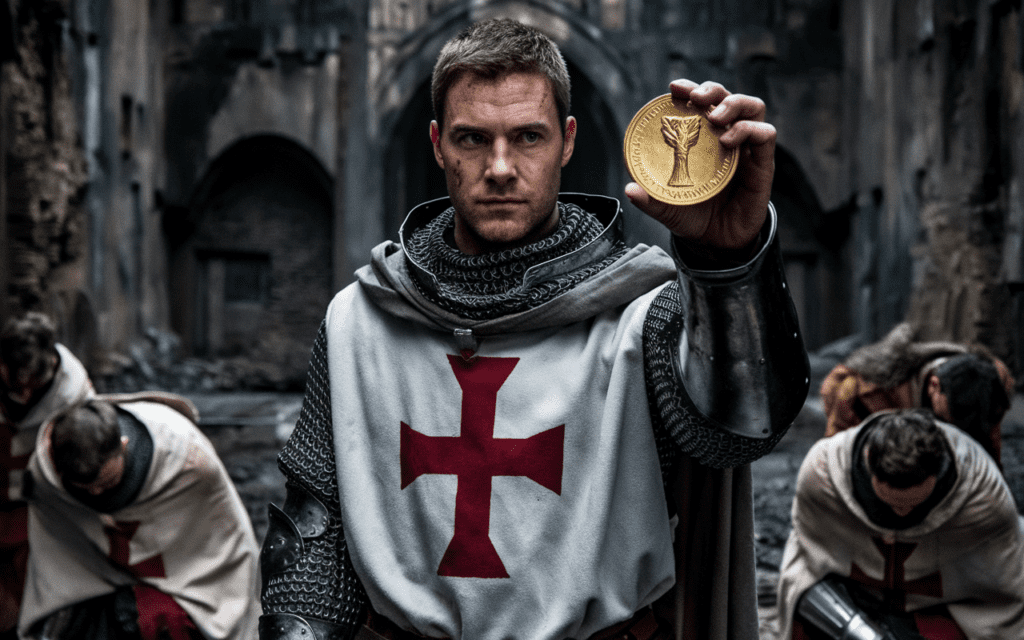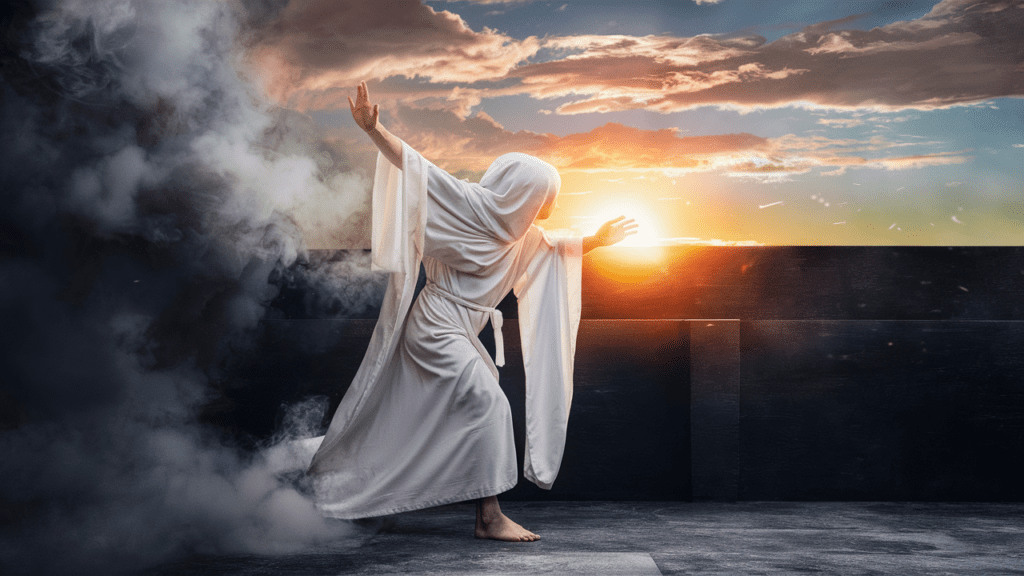The Knights Templar is one of the most enigmatic and influential orders in history. Formed during the Crusades, the Templars were not only known for their military prowess but also for their far-reaching influence on financial systems and their deep connections with esoteric symbolism. Let’s dive into the formation of the Templars, their role in starting modern banking, the worship of Baphomet, the infamous Friday the 13th, and how their legacy continues today.

Formation of the Knights Templar
The Poor Fellow-Soldiers of Christ and of the Temple of Solomon, commonly known as the Knights Templar, were founded in 1119 CE by a group of nine French knights, led by Hugues de Payens. Initially, their mission was to protect Christian pilgrims traveling to the Holy Land during the Crusades. Over time, the Templars gained wealth, influence, and special privileges from the church, including exemption from taxes and the authority to build their own fortifications.
Based at the Temple Mount in Jerusalem, the Templars were seen as protectors of Christendom. But beyond their military role, they soon became involved in the management of vast wealth, changing the course of economic history.
The Templars and the Birth of Modern Banking
One of the lesser-known but significant contributions of the Templars was their role in developing early banking systems. Due to the vast wealth they accumulated and their widespread influence across Europe and the Holy Land, the Templars devised a system where pilgrims and nobles could deposit money at one Templar location and withdraw it at another, using a form of letter of credit.
This system is considered one of the earliest forms of banking. Pilgrims who traveled long distances could do so without carrying large sums of money, making travel safer. The Templars would safeguard their deposits and issue these credits, revolutionizing financial transactions during that time. Over time, their financial power grew, making them bankers to kings, nobles, and even the Pope.
The Worship of Baphomet: Myth or Truth?
The most mysterious and controversial part of Templar history is the accusation of Baphomet worship. During the 14th century, when the Templars were brought to trial, many confessions—extracted under torture—claimed that the order worshiped a deity named Baphomet. Some describe Baphomet as a horned, androgynous figure, often associated with Satanic imagery.
But what does Baphomet really mean?
Many scholars suggest that the word Baphomet is a distortion of the name Mahomet, or Muhammad, the Prophet of Islam. When reversed, some speculate it may refer to Temohpab, or “Sophia” in its Greek form, symbolizing wisdom. However, the exact nature of Baphomet remains ambiguous, with interpretations ranging from an Islamic influence to a symbol of esoteric wisdom hidden within the Templars’ practices.
While the true nature of Baphomet worship remains a mystery, it has become a symbol for esoteric knowledge, duality, and occult practices, often linked to modern secret societies and mystery schools.
The Fall of the Knights Templar: Friday the 13th
On Friday, October 13th, 1307, King Philip IV of France, in collusion with Pope Clement V, orchestrated a mass arrest of the Knights Templar. Hundreds of Templars, including Grand Master Jacques de Molay, were captured, tortured, and ultimately executed. The Templar order was disbanded, their wealth confiscated, and their leaders burned at the stake.
This event gave birth to the superstition surrounding Friday the 13th as an unlucky day, a reminder of the sudden and brutal fall of the Templars. Many conspiracy theorists believe that the fall of the Templars was not only about their wealth but also about silencing their secret knowledge and influence.
The Knights Templar Today: Legacy and Influence
Although the original order of the Knights Templar was disbanded, their influence did not die. Many believe that the Templar legacy lived on through various other secret societies, such as the Freemasons and the Rosicrucians. In Freemasonry, for instance, the Knight Templar Degree is one of the highest degrees one can attain, linking the modern order to the ancient Templars.
Today, the Knights Templar are often seen as a symbol of the Holy Grail, with legends suggesting that they were the true protectors of this sacred artifact. The Holy Grail, however, is more than just a physical object; in esoteric teachings, it symbolizes spiritual enlightenment and the quest for divine wisdom.
The Templar legacy lives on through modern Grail Knights—those who seek the higher truths and spiritual transformation that the Grail represents. In this sense, the Holy Grail is the ultimate goal of spiritual seekers, representing the alchemical marriage of wisdom and power, and the attainment of Christ consciousness.
What Did the Knights Templar Represent?
The Knight Templar Degree in modern secret societies represents spiritual mastery, the protector of ancient wisdom, and the quest for the Holy Grail. The Templars were not only warriors but also keepers of secret knowledge. They carried out their quest to protect this wisdom—hidden in the form of symbols, rituals, and esoteric teachings.
At Unmatrix, we teach that the Templars’ story is a reminder of how hidden knowledge and spiritual truths are often protected by secret societies, sometimes at great cost. Their quest for the Grail, like many esoteric journeys, requires sacrifice, commitment, and often, the risk of persecution by external forces—whether they be governments or religious authorities.
Conclusion: The Templar’s Legacy Lives On
The Knights Templar hold a significant place in history, not just for their role in the Crusades but also for their contributions to modern banking, their esoteric teachings, and their ultimate sacrifice. From the rise of the order to their tragic fall on Friday the 13th, the Templars’ influence has carried forward into modern-day secret societies, continuing to fuel the quest for spiritual wisdom and enlightenment.
Their pursuit of the Holy Grail—whether viewed as a physical artifact or as spiritual attainment—continues to inspire many to seek the higher truths hidden within ancient traditions. At Unmatrix, we encourage individuals to embark on their own spiritual quest, free from the constraints of hierarchical control or secret orders.
For more insights on spiritual history and esoteric wisdom, join us on Instagram and YouTube. Discover deeper transformative practices in our book, A Guide to Unmatrix Yourself, available on our website and Amazon. Visit A Guide to Unmatrix Yourself for more details.


